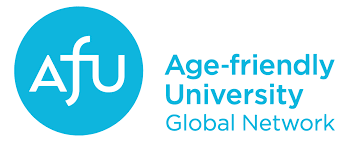The Necessity of Age-Inclusive Language in Our Daily Lives
October 01, 2022 Isabell C. May, PhD
Using age-inclusive language can break ageist stereotypes and biases that are pervasive in today’s society.
Do you cringe when you hear someone refer to a group of people in their 30s as “kiddos”? How about if someone calls an older person a “little old lady”? Or if an entire group of people is described as “the elderly”?
Well, if you do — or even if you don’t — you have just been introduced to ageist language. “But wait,” you might ask, “what do you mean by ‘ageist’ ”? No problem — let me answer that for you: Changing the Narrative: Ending Ageism Together, an online community of anti-ageism activists supported by leading aging organizations, describes ageism as “stereotyping, prejudice, and discrimination based on age.” Language that perpetuates those stereotypes and prejudices is often described as ageist language, with “ageist” being the adjective to ageism.
Ageist language is more pervasive than you might think. It is not just ageist terms to describe people based on their age or how we might perceive their age; it’s also in the way that we tend to privilege being younger.
Let me share a personal example with you to illustrate what I mean. As I have entered into my 40s, friends, colleagues, and even strangers started saying things to me like, ”I can’t believe you are already 47” or “You don’t look your age at all.”
Initially, these comments, meant as well-intentioned compliments, would boost my self-esteem. Let’s face it, because I identify as a woman in a society that frequently judges us based on how “young” we look, it’s easy to just revel in these comments. But I also study communication and language use. And I am meticulous in educating my students about inclusive language practices across all dimensions of identity. With that lens, the comments as well as my initial reaction to them reveal how ageist language is deeply embedded in our cultural structures and individual behaviors.
A 2016 study, for example, demonstrated that the language we use reveals underlying biases that we have around age, almost to the point that ageist language is invisible in day-to-day use. This study, carried out by a group of researchers from the Department of Gerontology at Virginia Commonwealth University in Richmond, examined the language that students used in a social media assignment where they reflected on their interaction with older adults serving in a mentoring capacity.
Eleven years earlier, a review article on ageism and ageist language, published by communication researchers at Penn State University, came to similar conclusions: “[A]geist language reinforces ageism and creates a negative cycle […] so pervasive in our society that ageist language may be perceived as appropriate in some contexts, such as among family.”
Ageist language can impact us in powerful ways, as a recent commentary by two social work researchers from the University of Washington in Seattle demonstrates. The COVID-19 pandemic has further exacerbated existing ageist bias, the authors argue, that is being perpetuated by ageist language use such as using “the elderly” as a monolith to describe all older adults. Such language practices increase intergenerational tensions and create barriers affecting individuals’ access to care. Instead of using divisive terms, the authors promote describing all generations with more inclusive terms, as the Reframing Aging Initiative suggests.
So what can we do to change our language practice around age? We can certainly begin to focus on age-inclusive language. It starts with educating ourselves about language choices. A good place to start is to explore easily available resources on inclusive ways to talk about individuals of any age. One of my personal favorites, A Progressive’s Style Guide by Sum Of Us, a global consumer group, juxtaposes terms used versus terms avoided/questioned by anti-adultism and anti-ageism activists (the guide covers 13 more “issue areas” in addition to age). It’s a great place to begin familiarizing yourself with more conscious language around age.
Another great resource is a short blog post on the Alliance for Strong Families and Communities’ website, a Washington, D.C.-based nonprofit organization founded in 1911. It features a short list of commonly used phrases to avoid.
Lastly, I found Google’s Inclusive Marketing Practices on “Age” surprisingly insightful. In addition to listing terms and phrases to avoid like the previous two resources, it also places ageist language in a larger context of inclusive language practices around race, gender, socioeconomic status, and other dimensions of identity. On a more abstract level, it also has made me think about when it is actually relevant and/or necessary to refer to someone’s age.
Ultimately, words have power and shape how we see each other. It may not seem that big of a deal to comment on people’s age at certain occasions, or to use the phrase “over the hill” to describe an older person, but we owe it to ourselves to break down ageist stereotypes wherever we can. To make our institution a truly age-friendly university, we must begin by paying attention to the obvious as well as subtle ways that we might perpetuate ageism, in our daily interaction with each other as well as in our communication practices with the various audiences we interact with on a regular basis.
Isabell C. May, PhD, is an associate professor at the University of Maryland Graduate School, where she directs and teaches in the Science Communication certificate program. Dr. May also directs the UMB Writing Center and is passionate about equity-based and social justice-oriented pedagogies.